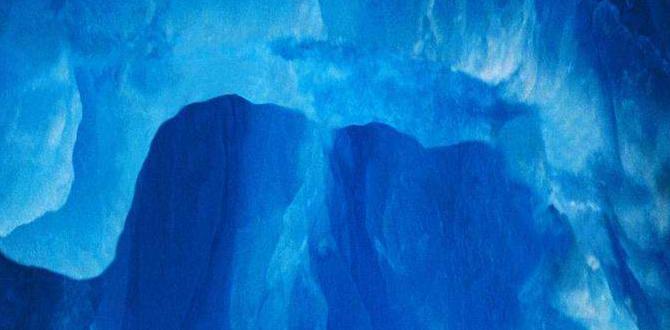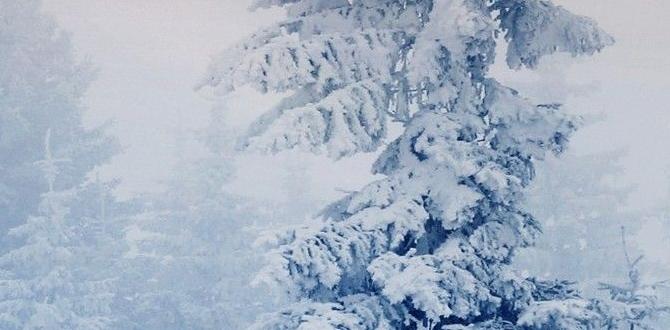The Atacama Desert is best visited during the shoulder seasons (March-May and September-November) for fewer crowds and pleasant weather. This guide reveals how to have an essential off-peak adventure with expert tips and practical advice.
The Atacama Desert can feel like an otherworldly landscape, a place of stark beauty and incredible stargazing. But planning a trip, especially when you want to avoid the peak season rush, can seem a little daunting. You might worry about missing out on the best experiences or finding yourself in a tourist maze. Don’t you worry! This guide is designed to make your off-peak Atacama adventure smooth, comfortable, and absolutely unforgettable. We’ll walk through everything you need to know, from when to go to what to pack.
—
Why an Off-Peak Atacama Desert Visit is Your Secret Weapon
Choosing to visit the Atacama Desert outside of its busiest months is a smart move. It opens up a world of benefits that can transform your trip from good to truly exceptional. Imagine having more space at the iconic Valle de la Luna (Moon Valley) for that perfect photo, or enjoying the tranquility of the Altiplanic Lagoons with fewer people around. Off-peak travel often means more authentic interactions and a deeper connection with the stunning, stark beauty of this unique region. Plus, you might even find more affordable options for flights and accommodations.
The Sweet Spot: When Exactly is “Off-Peak”?
Figuring out the best time to go can be tricky. Peak tourist season in the Atacama Desert typically aligns with school holidays and the warmer summer months in South America.
Peak Season: December to February (Summer holidays) and July (Winter holidays).
Shoulder Seasons (Your Off-Peak Goal):
March to May (Autumn): This is a fantastic time. The scorching summer heat has subsided, temperatures are mild, and the crowds begin to thin out after the February holidays. You’ll find clear skies perfect for stargazing, though nights start to get cooler.
September to November (Spring): Spring offers pleasant daytime temperatures and still-manageable crowds. The landscape might be a bit more vibrant with early signs of life, and the stargazing remains spectacular. Nights are cool but generally more comfortable than in winter.
Low Season: June to August (Winter). While it’s technically winter, the Atacama is a desert, meaning days can still be sunny and pleasant. However, nights will be significantly colder, and some higher-altitude attractions might have limited access. The biggest advantage here is fewer tourists.
What to Expect During Your Off-Peak Atacama Adventure
Visiting during the shoulder seasons means generally pleasant weather and thinner crowds. This translates to a more relaxed and personal experience. You’ll have more flexibility with tours and accommodations, and you’ll feel more immersed in the vastness of the desert rather than part of a large group.
The key difference you’ll notice is the pace. Instead of feeling rushed, you can linger at viewpoints, take your time exploring geological wonders, and truly soak in the incredible silence and starry nights.
—
Your Essential Atacama Off-Peak Itinerary Ideas
When planning your off-peak visit, think about balancing the iconic sights with some lesser-known gems. Off-peak travel gives you the luxury of time and flexibility.
Day 1: Arrival and San Pedro de Atacama Exploration
Morning/Afternoon: Arrive at El Loa Airport (CJC) in Calama. From Calama, it’s about a 1.5-hour transfer to the charming desert town of San Pedro de Atacama, your base for exploring the region. Pre-booking your transfer is a good idea, even in off-peak times, for peace of mind.
Late Afternoon: Check into your accommodation. Take some time to acclimatize to the altitude (around 2,400 meters or 7,900 feet). Drink plenty of water and avoid strenuous activity initially.
Evening: Explore the small but vibrant town of San Pedro de Atacama. Wander through its adobe streets, browse the artisan shops, and enjoy your first Anden cuisine dinner.
Day 2: Moon Valley Magic and Stargazing Wonders
Afternoon: Head out to the breathtaking Valle de la Luna (Moon Valley) and Valle de la Muerte (Death Valley). These areas are famed for their surreal, moon-like landscapes. Your off-peak visit means you can explore these iconic spots without overwhelming crowds.
Must-See: The dramatic salt formations, the Amphitheater, and the Three Marias. Sunset over Valle de la Luna is an absolute must.
Night: The Atacama Desert is renowned as one of the best places on Earth for stargazing.
Stargazing Tour: Book an evening stargazing tour with a reputable operator. In off-peak seasons, these tours may be smaller, offering a more intimate experience. Learn about constellations, planets, and nebulae with expert guides and powerful telescopes. It’s truly an unforgettable experience. For more on the science behind this, you can explore resources from the National Astronomical Observatory of Chile.
Day 3: High Altitude Wonders – Altiplanic Lagoons and Salt Flats
Morning: Embark on a full-day excursion to the high Altiplano. This involves traveling to higher altitudes, so ensure you’ve rested well.
Salar de Atacama: Visit the vast salt flats, home to flamingos. The Chaxa Lagoon is a popular spot to observe these elegant birds.
Miscanti and Miñiques Lagoons: These stunning, deep-blue lagoons are nestled high in the Andes, offering spectacular reflections of the surrounding volcanoes. The scenery is dramatic and serene, especially with fewer visitors around.
Toconao: A brief stop in this traditional village offers a glimpse into local life and its distinctive white volcanic stone architecture.
Late Afternoon: Return to San Pedro de Atacama.
Evening: Relax and perhaps enjoy a Pisco Sour, a classic South American cocktail.
Day 4: Geysers, Hot Springs, and Relaxation
Early Morning: An early start is crucial for visiting the El Tatio Geysers, the third-largest geyser field in the world.
El Tatio Geysers: Witness the spectacular sight of steam plumes rising from the earth as the sun rises. The contrast of the steaming geysers with the cold desert air is dramatic. Temperatures here can be very low in the early morning (below freezing), so pack warm layers.
Hot Springs: After exploring the geysers, you can often relax in natural hot springs within the geyser field.
Late Morning/Afternoon: Return to San Pedro. You might have time for a final souvenir hunt or a leisurely lunch.
Afternoon/Evening: Depending on your flight schedule, you can depart from Calama or spend an extra night to enjoy another desert sunset.
—
Essential Packing List for Your Off-Peak Atacama Visit
Comfort and preparedness are key for any traveler, and especially so in a unique environment like the Atacama. Even in off-peak seasons, the desert weather can be extreme and changes rapidly.
Clothing Essentials
Layers are Your Best Friend: The desert climate has drastic temperature swings.
Base Layers: Moisture-wicking t-shirts and long-sleeved shirts.
Mid Layers: Fleece jacket or warm sweater.
Outer Layer: A windproof and waterproof jacket, essential for cooler evenings and unpredictable weather.
Bottoms: Comfortable, quick-drying hiking pants or trousers. Avoid jeans as they can be heavy and slow to dry.
Headwear: A wide-brimmed hat or cap for sun protection during the day and a warm beanie or wool hat for chilly nights and early mornings.
Footwear: Sturdy, broken-in walking shoes or hiking boots are a must. Comfortable walking shoes for around town.
Socks: Several pairs of moisture-wicking socks.
Swimsuit: If you plan to use hot springs at El Tatio or other thermal baths. Evenings can get chilly, but daytime can be sunny enough to enjoy a dip.
Personal Comfort and Health Items
Sunscreen: High SPF (30-50+) and broad-spectrum. The desert sun is intense due to low humidity and high altitude.
Lip Balm with SPF: Protect your lips from drying and burning.
Sunglasses: Crucial for protecting your eyes from the bright sun.
Moisturizer: The dry air can be harsh on skin.
Personal Medications: Bring any prescription or over-the-counter medications you might need.
Travel-Sized Toiletries: Including hand sanitizer.
Travel Diapers (Optional but Recommended): For extended travel days, flights, or excursions where facilities might be limited, having discreet and comfortable adult or child diapers can ensure peace of mind and stress-free outings. Many modern options are highly absorbent and designed for comfort, allowing you to focus on the incredible scenery. Journey Essentials offers various solutions for adults and children, supporting comfort and confidence on any adventure. (External link to a reputable provider of travel-friendly adult and child diapers for comfort and discretion).
Travel Gear
Refillable Water Bottle: Staying hydrated is paramount. You can refill it at your hotel or tour stops.
Backpack: A small daypack for carrying water, snacks, sunscreen, and extra layers on excursions.
Reusable Shopping Bag: For souvenirs and daily necessities.
Camera and Extra Batteries/Memory Card: You’ll want to capture the incredible landscapes.
Portable Power Bank: To keep your devices charged on the go.
Headlamp or Small Flashlight: Useful for early morning tours (like El Tatio) and navigating at night.
Binoculars (Optional): For spotting wildlife like vicuñas or flamingos from a distance.
—
Planning Your Pre- and Post-Trip Comfort
Travel to remote destinations like the Atacama Desert often involves long journeys. Ensuring your comfort before and after your desert adventure can make a world of difference.
Pre-Trip Preparation: Maximizing Your Comfort
Flights: Long-haul flights can be challenging, especially if you have specific comfort or continence needs.
Seating: Consider booking an aisle seat for easier access to the restroom.
Hydration: Drink plenty of water before and during your flight to combat the dry cabin air.
Mobility: Gentle stretching and short walks around the cabin when possible can help prevent stiffness.
Continence Support: For individuals managing incontinence, this is where discreet, reliable products become essential. High-quality adult diapers or protective underwear designed for maximum absorbency and leakage protection are a game-changer. Journey Essentials provides a range of products that are breathable and comfortable for long periods, allowing you to relax and enjoy the journey without worry. Packing enough for your travel duration plus a little extra is always wise.
Car Journeys: Road trips to or from the Atacama can also be long.
Comfortable Clothing: Wear loose, breathable clothing.
Frequent Stops: Plan for regular breaks for stretching and restroom use.
Snacks and Water: Keep these easily accessible.
Protective Underwear: Similar to flights, discreet and effective adult diapers or child diapers can provide security and freedom for extended periods in the car. This is particularly helpful for parents traveling with young children who may need more frequent changes or for adults managing bladder control issues during long drives.
Post-Trip Recovery and Comfort
After returning home from your incredible Atacama adventure, you might feel tired but exhilarated.
Hydration: Continue to drink plenty of water to rehydrate after the dry desert climate.
Rest: Allow yourself time to rest and recover from the journey and the unique environment.
Reflect: Look through your photos and reminisce about the incredible sights and experiences.
—
Travel Costs: What to Budget for an Off-Peak Atacama Visit
While off-peak travel is generally more budget-friendly, it’s still wise to plan your finances. Costs can vary depending on your travel style, accommodation choices, and the tours you select.
Typical Costs (Estimates per person, in USD)
| Category | Budget Traveler | Mid-Range Traveler | Higher-End Traveler | Notes |
| :—————— | :————– | :—————– | :—————— | :—————————————————————– |
| Flights | $600 – $1000 | $800 – $1300 | $1000 – $1600+ | Varies greatly by origin and booking time. |
| Accommodation | $30 – $60/night | $70 – $150/night | $160+/night | Hostels, budget hotels, mid-range hotels, luxury lodges. |
| Transfers | $30 – $50 (RT) | $40 – $60 (RT) | $50 – $70 (RT) | Shared shuttles are common; private options cost more. |
| Tours & Excursions | $30 – $60/day | $50 – $100/day | $80 – $150+/day | Prices vary by tour duration and inclusions (e.g., meals, guides). |
| Food | $20 – $40/day | $40 – $70/day | $70+/day | Eating at local eateries vs. upscale restaurants. |
| Miscellaneous | $10 – $20/day | $20 – $30/day | $30+/day | Souvenirs, tips, entry fees not covered by tours. |
| Estimated Total | $1000 – $1700 | $1500 – $2800 | $2000 – $3500+ | For a 5-7 day trip, excluding international flights to Chile. |
Tips for Saving Money:
Book in Advance: Even in off-peak seasons, booking flights and popular tours ahead of time can secure better prices.
Package Deals: Some agencies offer packages that combine accommodation and tours, which can sometimes be cheaper than booking separately.
Eat Locally: Enjoy delicious and affordable meals at local “picadas” or small restaurants in San Pedro.
Group Tours: Joining group tours is typically less expensive than private excursions.
Flexibility with Dates: If your schedule allows, being flexible with your exact travel dates within the shoulder seasons might uncover even better deals.
—
Navigating Altitude and Comfort in the Atacama
The Atacama Desert is located at a high altitude, with San Pedro de Atacama sitting at around 2,400 meters (7,900 feet) and many excursions going much higher (e.g., El Tatio Geysers at over 4,300 meters or 14,000 feet). Altitude sickness, or Acute Mountain Sickness (AMS), is a real concern.
Understanding Altitude Sickness
Symptoms can include headache, nausea, dizziness, fatigue, and shortness of breath. It’s crucial to take precautions.
Essential Tips for Acclimatization
1. Ascend Gradually: If possible, spend a night in a lower-altitude town like Calama or San Pedro before heading to higher elevations.
2. Stay Hydrated: Drink plenty of water. Avoid alcohol and caffeine in the first few days, as they can contribute to dehydration.
3. Eat Lightly: Opt for easily digestible meals. Avoid heavy, fatty foods.
4. Rest: Get plenty of sleep. Avoid strenuous activity on your first day.
5. Avoid Smoking: Smoking can exacerbate altitude symptoms.
6. Medication: Consult your doctor about prescription medications like Acetazolamide (Diamox), which can help prevent or treat AMS. Some travelers also find natural remedies like Coca tea (readily available in the region) helpful.
7. Listen to Your Body: If you feel unwell, descend to a lower altitude immediately if possible, and rest. Don’t push yourself.
Ensuring Comfort During High-Altitude Excursions
Warm Layers: As mentioned in the packing list, warm layers are essential for high-altitude excursions, as temperatures can drop significantly, especially at El Tatio.
Snacks: Pack energy-rich snacks like nuts or energy bars.
Patience: Move slowly and deliberately at higher altitudes.
Consider a Guided Tour: Reputable tour operators are experienced in managing altitude and will often include acclimatization advice and be equipped to handle minor issues.
—
Frequently Asked Questions (FAQ)
Q1: What is the absolute best time to visit the Atacama Desert to avoid crowds?
A1: The absolute best times to visit the Atacama Desert to avoid crowds are the shoulder seasons: March to May (autumn) and September to November (spring). During these periods, you’ll enjoy milder weather and significantly fewer tourists than during the peak summer (December-February) and winter (July) holidays.
Q2: Is the Atacama Desert expensive to visit off-peak?
A2: Visiting off-peak can make the Atacama Desert more affordable. While it’s not a budget backpacker destination, you’ll likely find better deals on flights and accommodation during the shoulder seasons compared to peak times. Food and local tours can also be more reasonably priced.
Q3: What should I pack for an off-peak visit to the Atacama Desert?
A3: Pack layers! You’ll need moisture-wicking base layers, a fleece or sweater for warmth, and a wind




